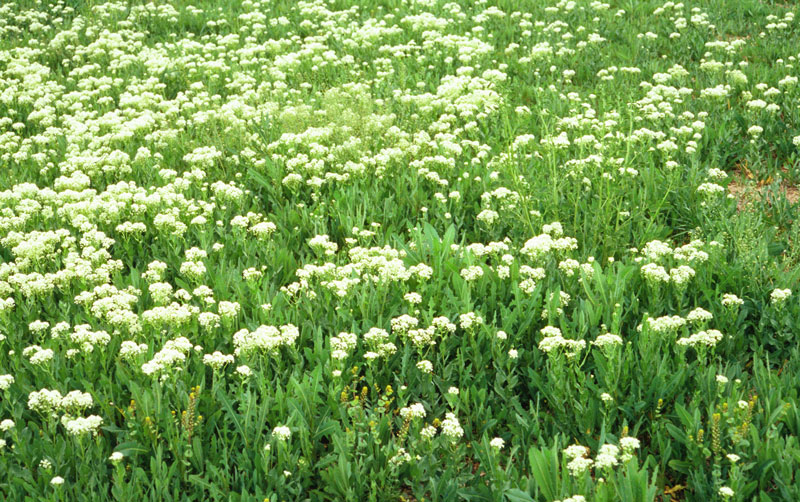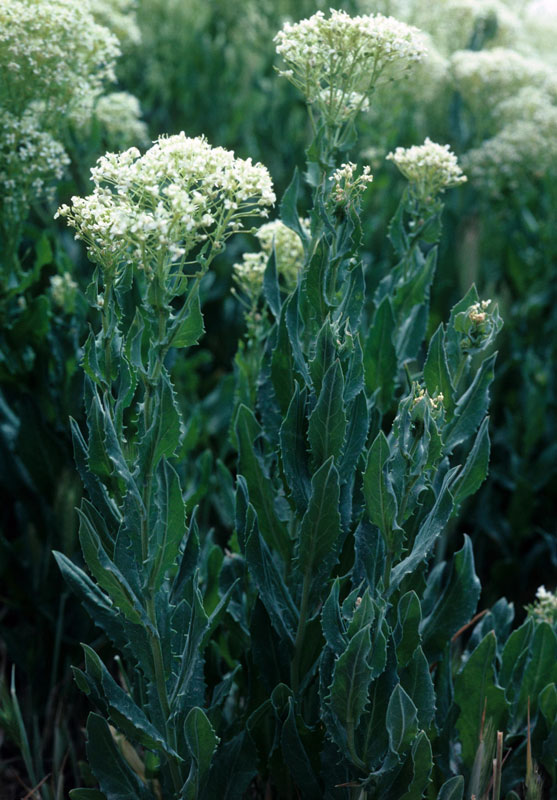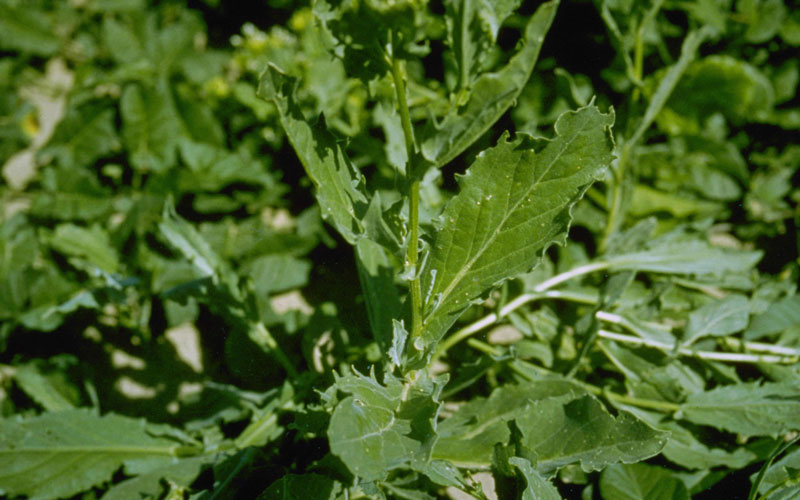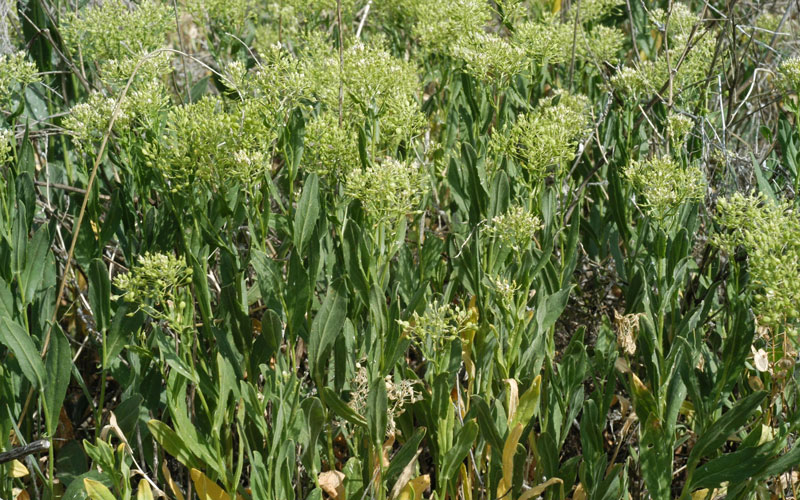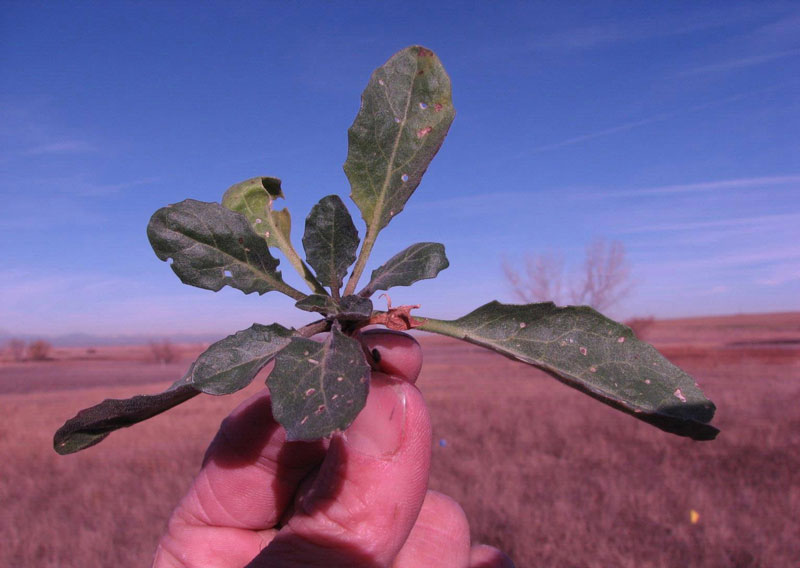Hoary Cress
Cardaria draba
Description
Hoary cress, also known as white top, is a perennial forb in the mustard family native to Eurasian. Leaves are alternate, 1.6-4 in long, blue green, and lance-shaped. Grows erect from 10 to 18 inches high. Roots are rhizomatous and usually occur at depth of 29-32 inches. The root system of hoary cress consists of vertical and lateral roots from which new rosettes and flowering shoots arise. Seed capsules are heart shaped, and contain two reddish-brown seeds (source).
Habitat
Distrusted open areas, ditch banks, roadsides, wetland and riparian areas and agricultural fields.
Location in Nebraska
It is a priority invasive species in the tallgrass prairie ecoregion in Nebraska.
Pathway of Introduction and Spread
Reproduces both by seeds and vegetatively. One plant can produce from 1,200-4,800 seeds (source).
Impacts
Hoary cress is generally considered unpalatable to livestock and spreads as a result. It is a highly competitive weed once it becomes established. Hoary cress spreads primarily by extremely persistent roots and will eventually eliminate desirable vegetation and become a monoculture displacing native vegetation.
George Beck and James Sebastian, Colorado State University, Bugwood.org
Mark Schwarzlander, University of Idaho, Bugwood.org
L.L. Berry, Bugwood.org
